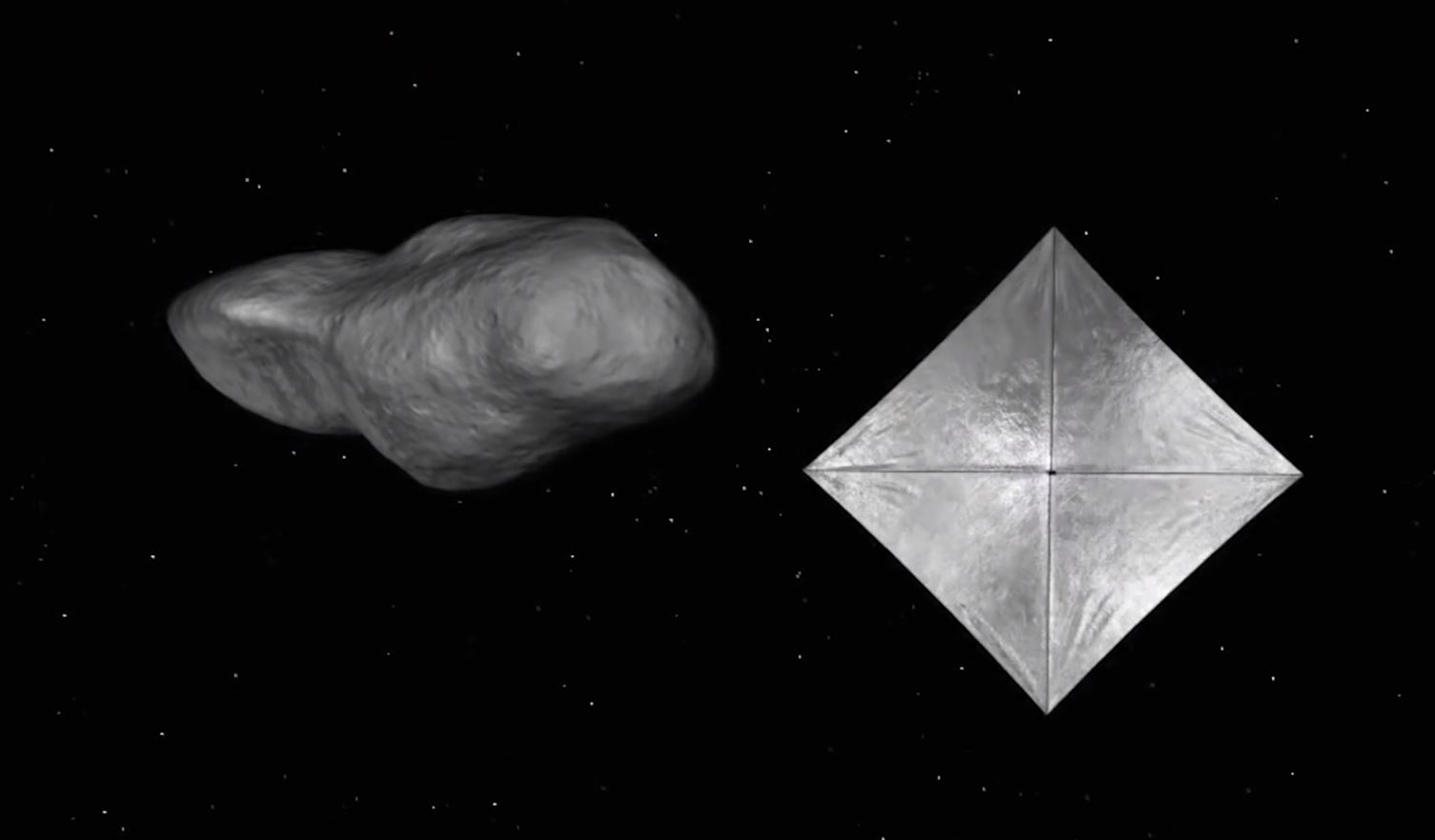'Speed' Docuseries Shows What Light-Powered Cubesat Might Look Like in Space (Video)
One future journey through the solar system might be possible, thanks to a sail powered by the sun.
In a new clip from the just-released docuseries ''Speed,'' host Sean Riley chats with Les Johnson, the principal investigator of the solar sail for NASA's Near-Earth Asteroid Scout (NEA Scout) mission. This video is featured in one of the four episodes of the series, which will look at the science and history of travel. ''Speed'' premieres on the digital streaming service CuriosityStream today (April 18).
A square-shaped solar sail may accelerate NEA Scout's journey through the solar system. NEA Scout is a six-unit cubesat that will fly into space on NASA's Orion spacecraft, as part of Exploration Mission-1, along with 12 other secondary science payloads.
Related: Evolution of Solar Sails for Space Travel (Photos)
"Let's just wrap our heads around light using force," Riley says in the video. "How's that work?"
''Well, you don't feel it, but on a sunny day, as the light is reflecting from you, it's actually pushing on you,'' Johnson replies. They discuss the project inside a facility of NASA's Marshall Space Flight Center.
''Light is made up of little particles called photons," Johnson adds. ''As they reflect from you, it's just like wind off a sail. They bounce off and impart a little bit of momentum to you when they do that, but it's a very small force. You don't feel it."
Breaking space news, the latest updates on rocket launches, skywatching events and more!
When billions of light particles hit the sail in space, that little bit of acceleration adds up. A solar sail is a perpetual propellant — as long as the sun shines, the sail never runs out of power. The innovation has the potential to carry science instruments farther away from Earth and to enable new types of missions, agency officials said in a June 2018 statement about NEA Scout.
Four arms called "booms" are attached to the spacecraft. Much like the mast of a ship, these structures would deploy and support the solar sail, whose four sides are each about the length of a school bus.
As the mission's name suggests, NEA Scout would travel to a near-Earth asteroid. The flyby mission will collect photographic data that scientists can use to learn more about asteroids and the potential challenges of sending humans to asteroids in the future.
You can find out more about solar sails and the NEA Scout mission by tuning in to "Speed," which is now available on CuriosityStream. CuriosityStream is an award-winning documentary streaming and on-demand service, and currently carries over 2,000 program titles. It was launched by Discovery Communications founder John Hendricks in 2015.
- Wild Idea: What If Interstellar Visitor 'Oumuamua Is an Alien Light Sail?
- New LightSail 2 Spacecraft Will Boost Solar-Sailing Interplanetary Missions
- Japan Just Shot a Fake Asteroid with a Space Bullet … for Science
Follow Doris Elin Salazar on Twitter @salazar_elin. Follow us on Twitter @Spacedotcom and on Facebook.

Doris is a science journalist and Space.com contributor. She received a B.A. in Sociology and Communications at Fordham University in New York City. Her first work was published in collaboration with London Mining Network, where her love of science writing was born. Her passion for astronomy started as a kid when she helped her sister build a model solar system in the Bronx. She got her first shot at astronomy writing as a Space.com editorial intern and continues to write about all things cosmic for the website. Doris has also written about microscopic plant life for Scientific American’s website and about whale calls for their print magazine. She has also written about ancient humans for Inverse, with stories ranging from how to recreate Pompeii’s cuisine to how to map the Polynesian expansion through genomics. She currently shares her home with two rabbits. Follow her on twitter at @salazar_elin.

